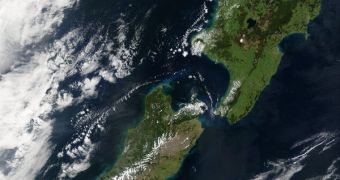After developing a complex historical record of seismic events in the regions around New Zealand, a team of experts determined that the nation is subjected to a 30 percent chance of experiencing a devastating earthquake within the next 50 years or so.
The idea that large temblors occur regularly in this area was first proposed half a century ago, but thus far researchers did not have access to the relevant data to either support, or infirm, this claim. Now, the science appears to back up the old idea.
The same research method that was used to reach this conclusion could be applied to all areas of the world where large tectonic plates meet, and form fault lines. The one issue plaguing such an effort is that long-term earthquake records for these high-risk areas are unavailable.
What this means is that researchers will have to recreate past occurrences first, and only then analyze seismic risks. But this is definitely a good starting point in predicting earthquakes, since doing so is notoriously difficult and unreliable.
The target of the new investigation was a site along the Alpine fault in New Zealand, which is the country's equivalent of the San Andreas fault line, in California. The record the team created spans back 8,000 years, Our Amazing Planet reports.
Details of the research effort were published in the June 27 online issue of the top journal Science.
“Really big earthquakes that occur quite infrequently can be tracked over many thousands of years by using high-resolution geological studies. The repeat time for these events, at least on some faults, is quite regular,” says Kelvin Berryman.
The researcher holds an appointment as a geologist at GNS Science in Lower Hutt, New Zealand. He says that the team used carbon dating to measure the age of leaves, seeds and other biological materials that were buried inside the fault line every time a major earthquake occurred.
Over the past 8 millennia, the team found, 24 large earthquakes occurred in the region at relatively regular intervals – between 100 and 500 years (average of 330 years). The seismic events had intensities ranging from 7.6 to 8.3.
Considering that the last major earthquake to hit New Zealand took place 295 years ago, and that the average interval between these events is 330, there results a 30 percent chance that a temblor will occur within the next 50 years. That chance increases as more time passes.
“If not in our lifetimes, then [an earthquake is] increasingly likely in our children's or our grandchildren's – therefore a precautionary approach is certainly warranted,” Berryman adds.
“The important things for authorities are to encourage personal and household preparedness, to address earthquake-prone building occupancy in the near field of the fault, and to encourage preparedness actions among emergency services and responding agencies,” he concludes.

 14 DAY TRIAL //
14 DAY TRIAL //